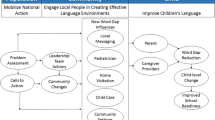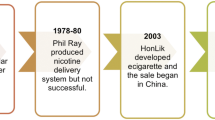In a study on ‘Assessment of Efficacy of an Anti-Tobacco Community Education Program’ on Kolar District of Karnataka, India, an experimental and two control areas were chosen based on comparable population, health, and socioeconomic parameters. The two main objectives were to prevent individuals from taking up the tobacco habit among those who currently did not smoke or chew tobacco, and to stop the tobacco habit in those who did smoke or chew tobacco. A baseline tobacco-habit survey of the population was followed by anti-tobacco education of the community in the experimental area only. Two years later, a repeat survey of the population was conducted, followed by a final survey after a further three years. Methods of health education of the community included screening of films, exhibits, and personal contact with a display of photographs of the harmful effects of tobacco. The results were evaluated through changes in prevalence rates, quitters' rates, and initiation rate. The final survey showed that in the experimental area, the decline in the prevalence rate in the combined sample compared with the baseline rates was 10.2 percent in males and 16.3 percent in females, with a corresponding quitter's rate of 26.5 percent in males and 36.7 percent in females. Among men, a higher proportion (30.2 percent) had given up chewing compared with smoking (20.4 percent).
Similar content being viewed by others
References
Wahi PN. The epidemiology of oral and oropharyngeal cancer. Bull WHO 1968; 38: 495–521.
Mehta FS, Pindborg JJ, Gupta PC, et al. Epidemiologic study of oral cancer and leukoplakia among 50,915 villages in India. Cancer 1969; 25: 844–61.
Gupta PC. An assessment of excess mortality caused by tobacco usage in India. In: Sanghvi LD, Notani P, eds. Tobacco and Health: The Indian Scene. Bombay, India: Tata Memorial Center, 1989: 57–62.
Gupta PC, Bhonsle RB, Mehta DS, et al. Mortality experience in relation to tobacco smoking and chewing habiss from a 10-year follow-up study in Ernakulam district Kerala. Int J Epidemiol 1984; 13; 184–7.
Orr IM. Oral cancer in betel nut chewers in Travancore. Lancet 1933; 2: 575–80.
Sanghvi LD, Rao KCM, Khanolkar VR. Smoking and chewing of tobacco in relation to cancer of the upper alimentary tract. Br Med J 1955; 1: 1111–4.
Sanghvi LD. Tobacco related cancers. In: Sanghvi LD, Notani P, eds. Tobacco and Health: The Indian Scene. Bombay, India: Tata Memorial Center, 1989: 9–15.
Annual Reports of the National Cancer Registry Programme of India. New Delhi, India: Indian Council of Medical Research, 1982–90..
Nandakumar A, Anantha N, Thimmasetty K. Cancer Patterns in Bangalore 1982–89. Bangalore, India: Department of Population Based Cancer Registry, Kidwai Memorial Institute of Oncology, 1990.
Pierce JP, Dwyer T, Frape G, et al. Evaluation of the Sydney “Quit. For Life” anti-smoking campaign. Med J Aust 1986; 144: 341–4.
Pierce JP, Aldrich RN, Hanratty S, et al. Uptake and quitting smoking trends in Australia 1974–84. Prev Med 1987; 16: 252–60.
Boyle P, Parkin DM, Statistical methods for registries. In: Jensen OM, Parkin DM, Maclennan R, Muir CS, Skeet RD, eds. Cancer Registration: Principles and Methods. Lyon, France: International Agency for Research on Cancer, 1991; IARC Sci. Pub. No. 95.
Mehta FS, Aghi MB, Gupta PC et al. An intervention study of oral cancer and precancer in rural Indian population: a preliminary report. Bull WHO 1982: 60: 441–6.
Gupta PC, Mehta CR, Pindborg JJ, et al. Intervention study for primary prevention of oral cancer among 36,000 Indian tobacco users. Lancet 1986; i: 1235–9.
Gupta PC, Mehta FS, Pindborg JJ, et al. Primary prevention trial of oral cancer in India; a 10-year follow-up study. J Oral Pathol Med 1992; 21, 433–9.
Author information
Authors and Affiliations
Additional information
The study was possible because of the financial support provided by the Indian Council of Medical Research, New Delhi to Kidwai Memorial Institute of Oncology, Bangalore.
Rights and permissions
About this article
Cite this article
Anantha, N., Nandakumar, A., Vishwanath, N. et al. Efficacy of an anti-tobacco community education program in India. Cancer Causes Control 6, 119–129 (1995). https://doi.org/10.1007/BF00052772
Received:
Accepted:
Issue Date:
DOI: https://doi.org/10.1007/BF00052772




